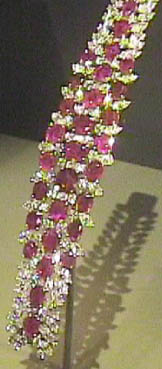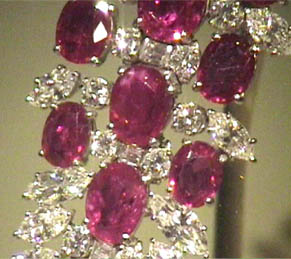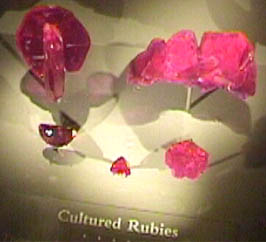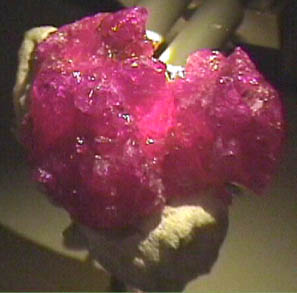|
These are man-made or "cultured" rubies. All the samples are on display at the Museum of Natural History. Ruby is made up of the mineral corundum, which is aluminum oxide (alumina, Al2O3). It becomes the precious stone when it has a a small impurity of chromic oxide which gives it the rich red color. If the corundum has other impurities to give it other colors, it is called sapphire.
Sapphires and rubies exhibit double refraction, which resolves a beam of incident light into two beams which emerge with different colors. These two gems also sometimes exhibit a six-pointed "star" effect from reflection off microscopic, needle-shaped rutile crystals which intersect at 60° angles.
| 


